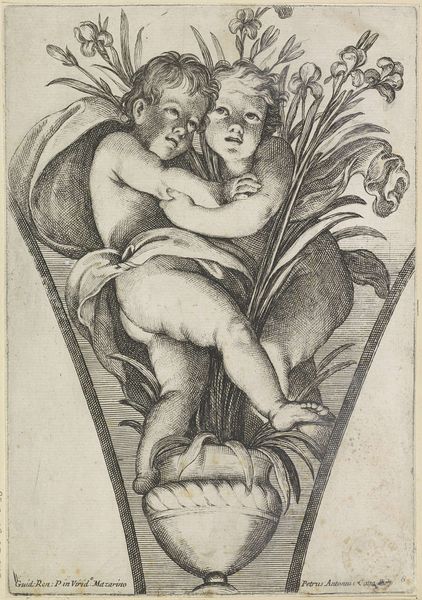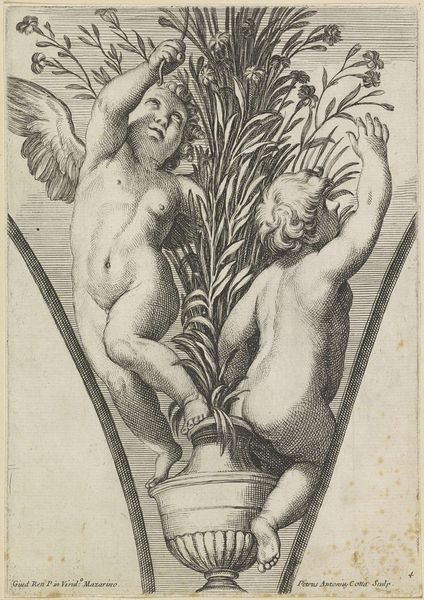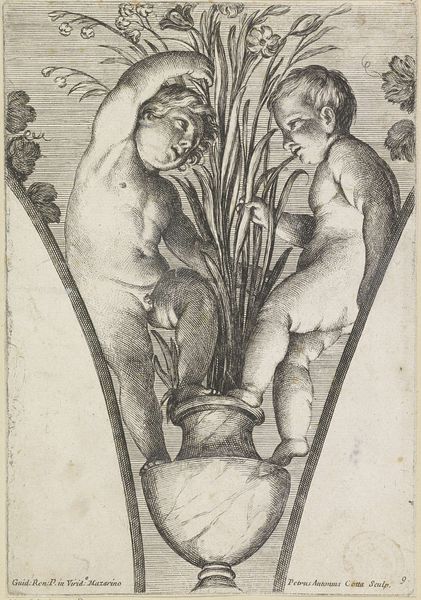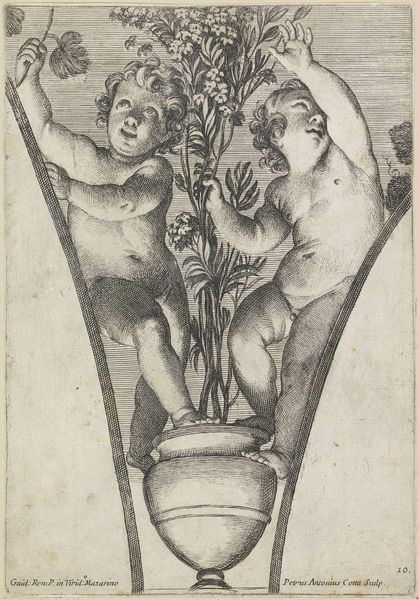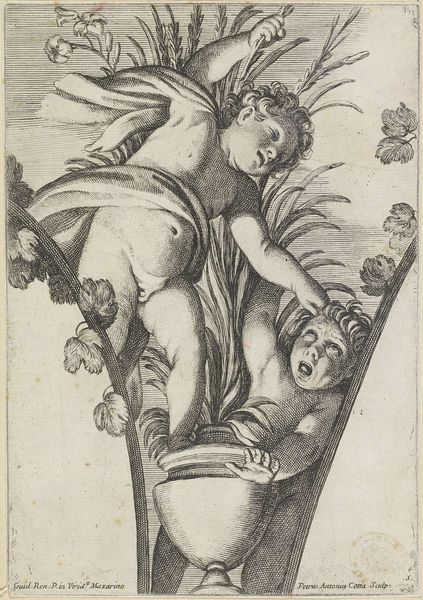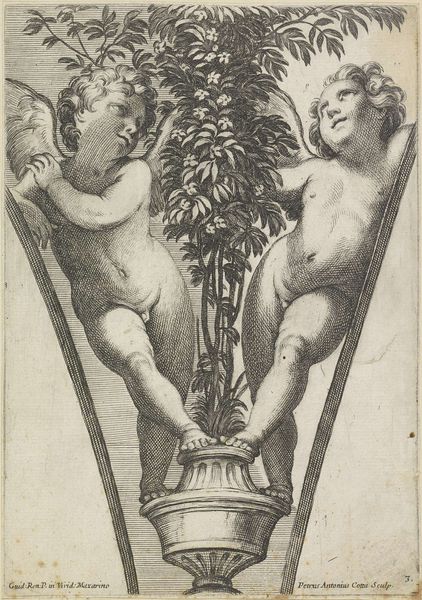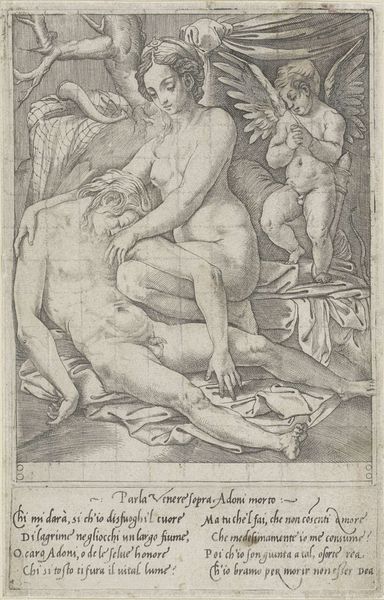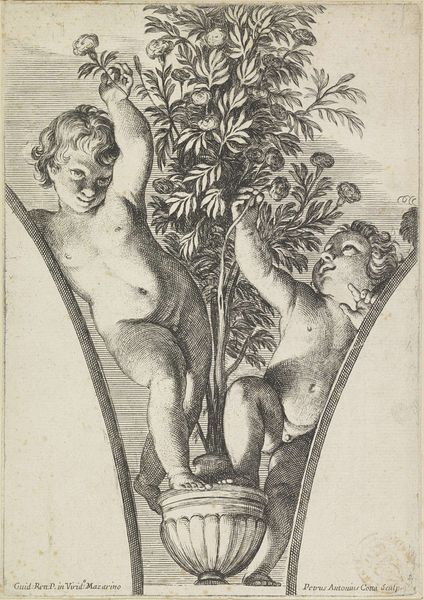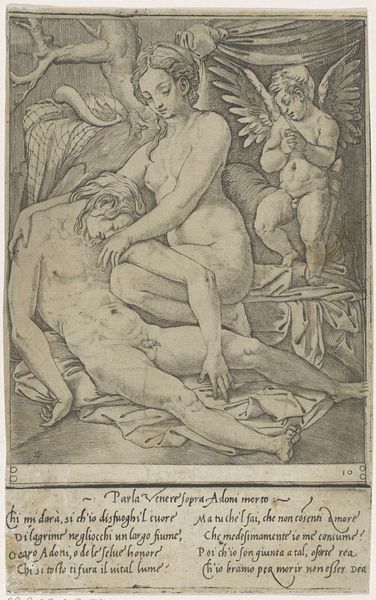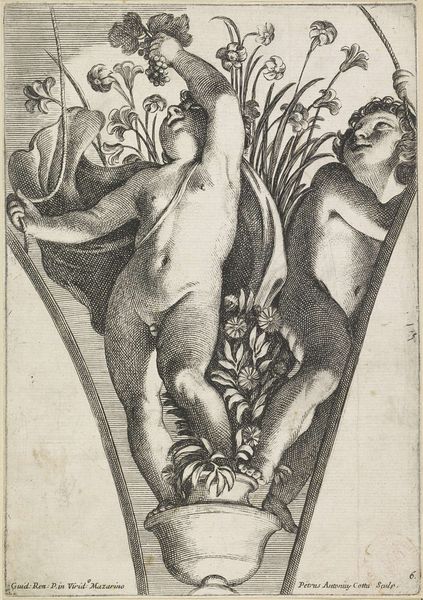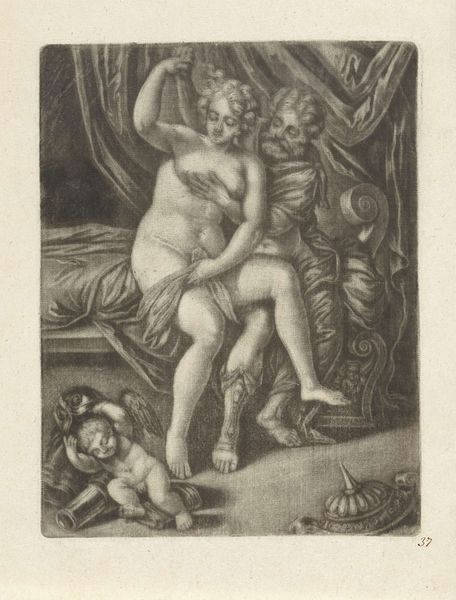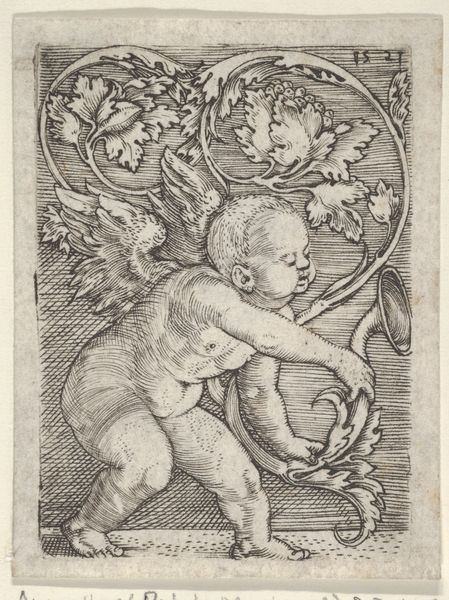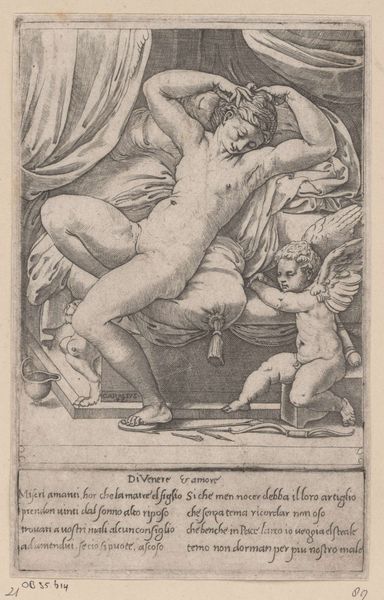
Twee putti, vechtend om een vogel, bij een plant in pot 1675 - 1685
0:00
0:00
print, engraving
#
pencil drawn
#
baroque
# print
#
figuration
#
pencil drawing
#
genre-painting
#
engraving
Dimensions: height 267 mm, width 184 mm
Copyright: Rijks Museum: Open Domain
Curator: This delicate engraving from the late 17th century by Pietro Antonio Cotta is titled "Two Putti Fighting over a Bird by a Plant in a Pot." It's currently held at the Rijksmuseum. Editor: It immediately strikes me as charming, but with a disquieting undertone. The dynamism is lovely, but it's a tiff between cherubic children over a captured bird. What conflicting symbols! Curator: Precisely. Looking at the engraving technique itself, Cotta clearly had mastery. Note the incredible detail achieved with simple lines—the varying textures of the putti's skin, the feathered bird, and even the plant. Editor: And consider how those textures operate within established visual metaphors. The putti, these symbols of innocence, are rendered with incredibly careful, cross-hatched lines, lending them a solidity and physicality that contrasts with the delicate etching defining the bird and plant life, representative of fleeting vitality. It's almost like the weight of earthly struggle contrasting with transient life. Curator: Indeed, it calls attention to the materiality of the work itself. The print, reproduced through engraving, hints at the availability of images, maybe even the manufacturing of idealic domestic scenes that hide this underlying struggle that comes with raising children. These prints themselves, commodities circulating in the Baroque era, contribute to how viewers process and consume these concepts. Editor: Thinking about these figures, cherubs aren't just decoration, they're layered symbols—messengers, guardians, representing divine love or childish whimsy. Here, it is less the divine and much more about squabbling. And that bird, such a classic symbol of freedom or the soul is held captive in this very carefully orchestrated scene, creating a dramatic, visual contradiction. Curator: Absolutely. It’s intriguing to consider who these prints were intended for, maybe bourgeois families seeking affirmation of their domesticity, but confronted by these subtle reminders of friction and impermanence. The tensions made visible via artistic work. Editor: So, what at first glance seems decorative transforms into something complex. It's really fascinating to decode the use of enduring motifs as symbolic, resonant contradictions. Curator: Exactly, by acknowledging material processes we start to glimpse these visual messages.
Comments
No comments
Be the first to comment and join the conversation on the ultimate creative platform.
